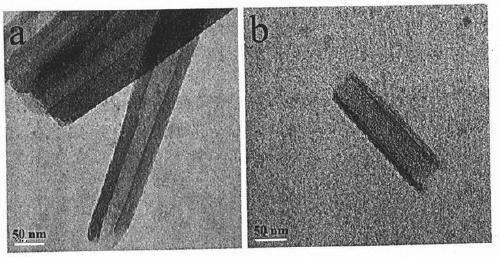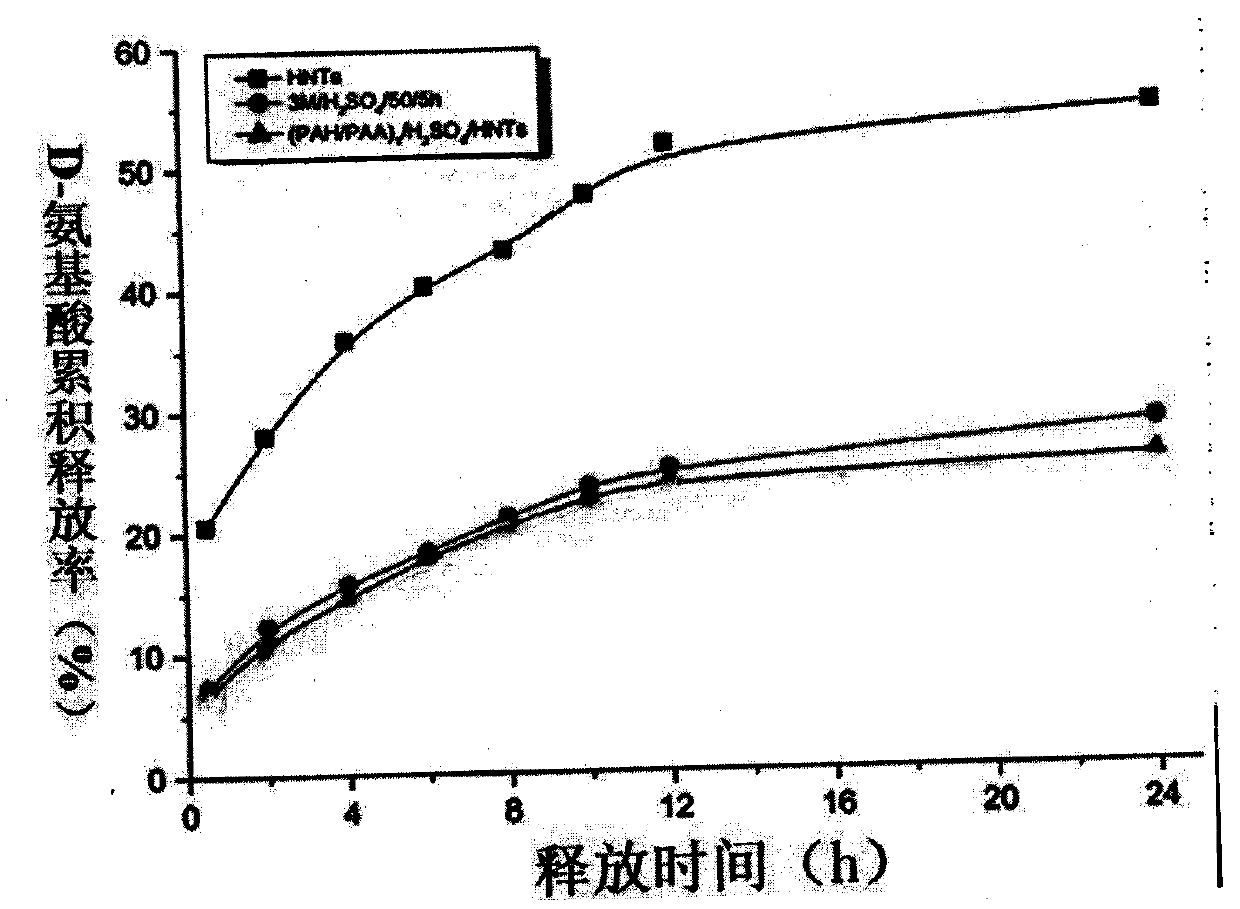Novel sustainable sustained-release method for biofilm inhibiting molecule
A biofilm and molecular technology, applied in fertilizer mixtures, fertilization devices, applications, etc., can solve the problems of short anti-biofilm pollution cycle and low utilization rate of D-amino acid, to achieve long-term control of biofilm pollution and improve utilization rate , the effect of prolonging the release time
- Summary
- Abstract
- Description
- Claims
- Application Information
AI Technical Summary
Problems solved by technology
Method used
Image
Examples
Embodiment 1
[0028] (1) Acid-modified halloysite (HNTs)
[0029] Weigh the natural halloysite, adopt the concentration of 3M sulfuric acid (H 2 SO 4 ), treated at 50°C for 5h, and then washed with distilled water until neutral. Centrifugal filtration and drying to prepare acid-modified halloysite (H 2 SO 4 / HNTs).
[0030] (2)H 2 SO 4 / HNTs loaded with D-tyrosine (DAA)
[0031] Weigh 50mg of D-tyrosine powder and dissolve in 100mL acetic acid solution, then add 0.5g H 2 SO 4 / HNTs, magnetically stirred at room temperature for 24h. After the loading is completed, it is centrifugally filtered at 4500 rpm, and dried in a vacuum drying oven for use. The loading of D-amino acids was calculated by ninhydrin colorimetry at 570 nm.
[0032] (3) H of load DAA 2 SO 4 / HNTs surface assembled pH-responsive weak polyelectrolyte
[0033] Using layer-by-layer assembly technology in the H loaded with DAA 2 SO 4 / HNTs surface assembled polyallylamine hydrochloride (PAH), polyacrylic acid (P...
PUM
 Login to View More
Login to View More Abstract
Description
Claims
Application Information
 Login to View More
Login to View More - R&D
- Intellectual Property
- Life Sciences
- Materials
- Tech Scout
- Unparalleled Data Quality
- Higher Quality Content
- 60% Fewer Hallucinations
Browse by: Latest US Patents, China's latest patents, Technical Efficacy Thesaurus, Application Domain, Technology Topic, Popular Technical Reports.
© 2025 PatSnap. All rights reserved.Legal|Privacy policy|Modern Slavery Act Transparency Statement|Sitemap|About US| Contact US: help@patsnap.com



